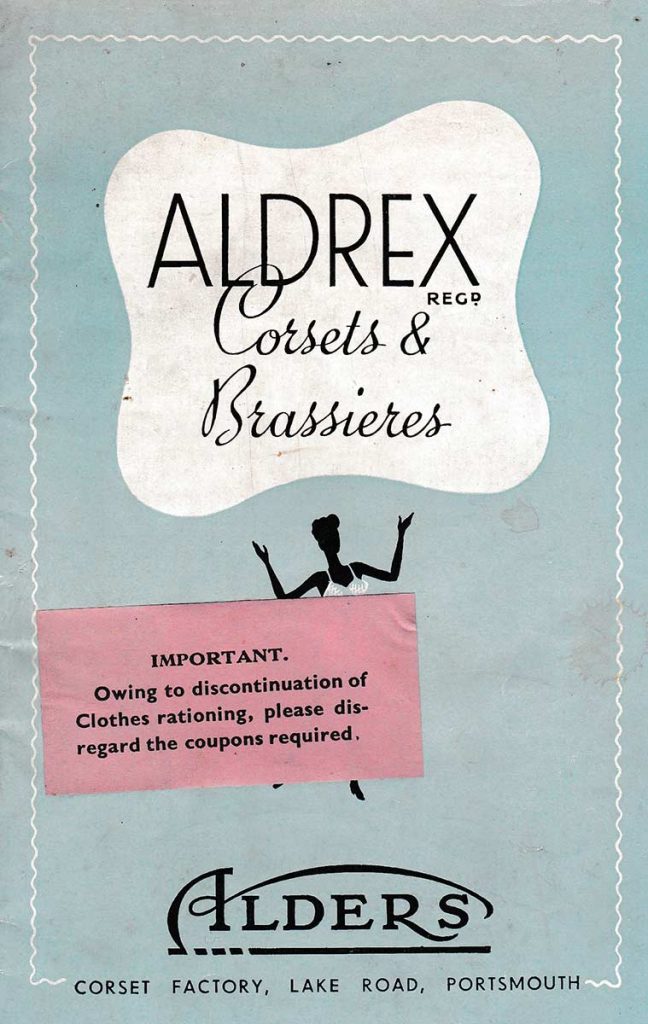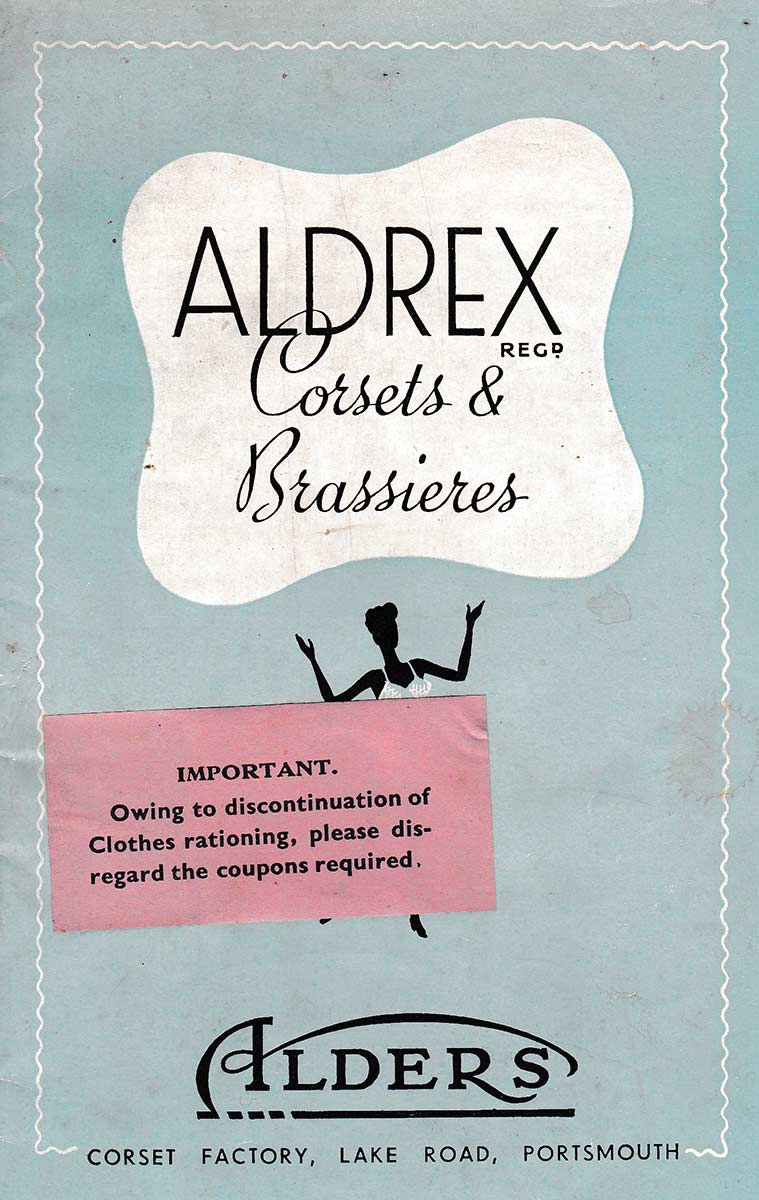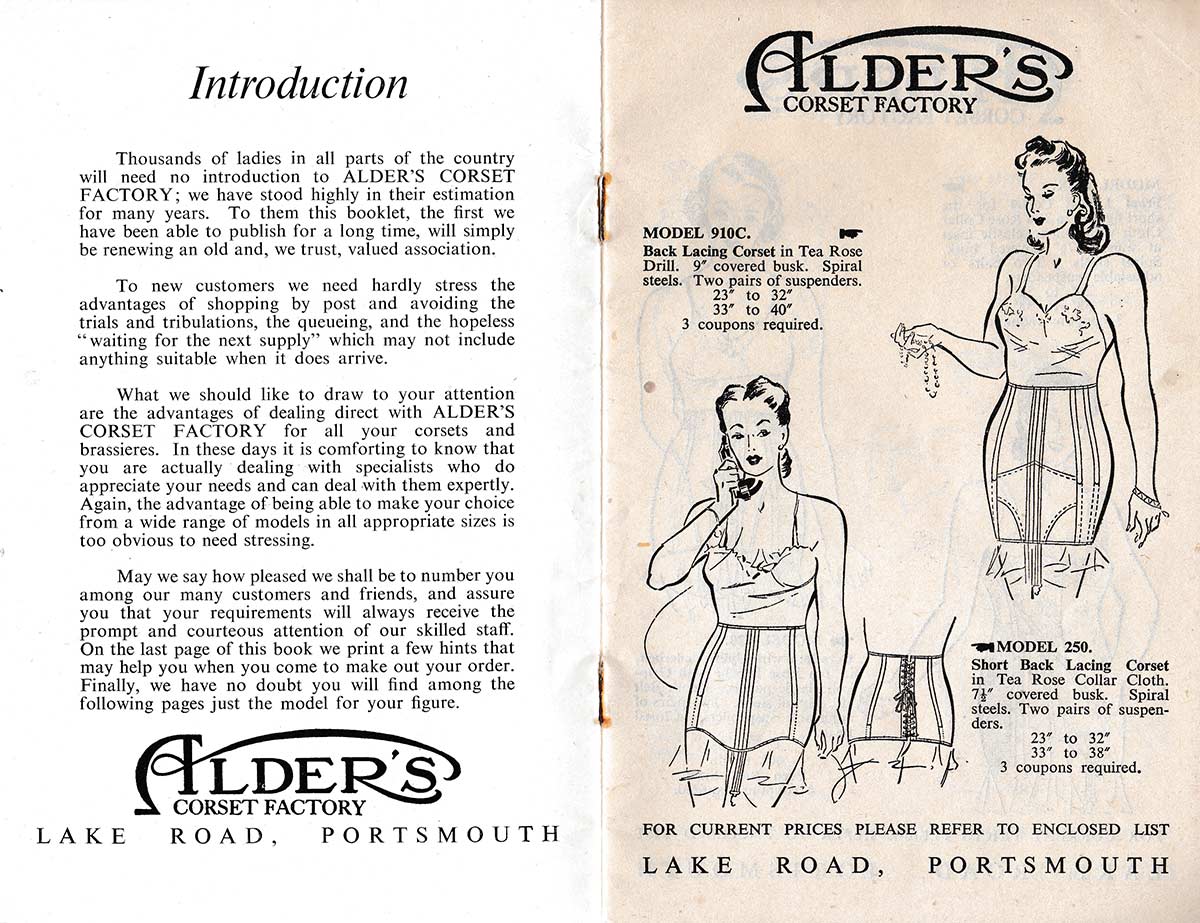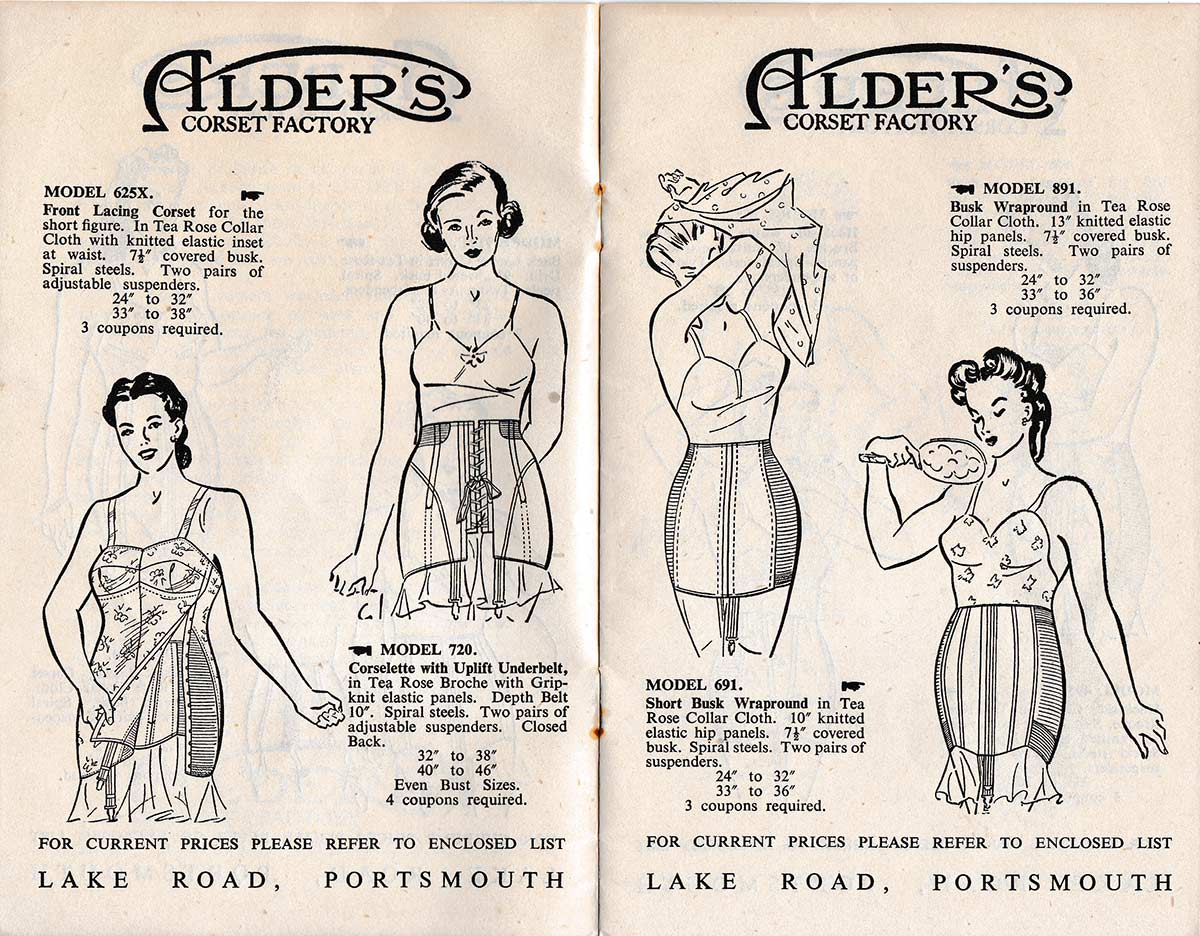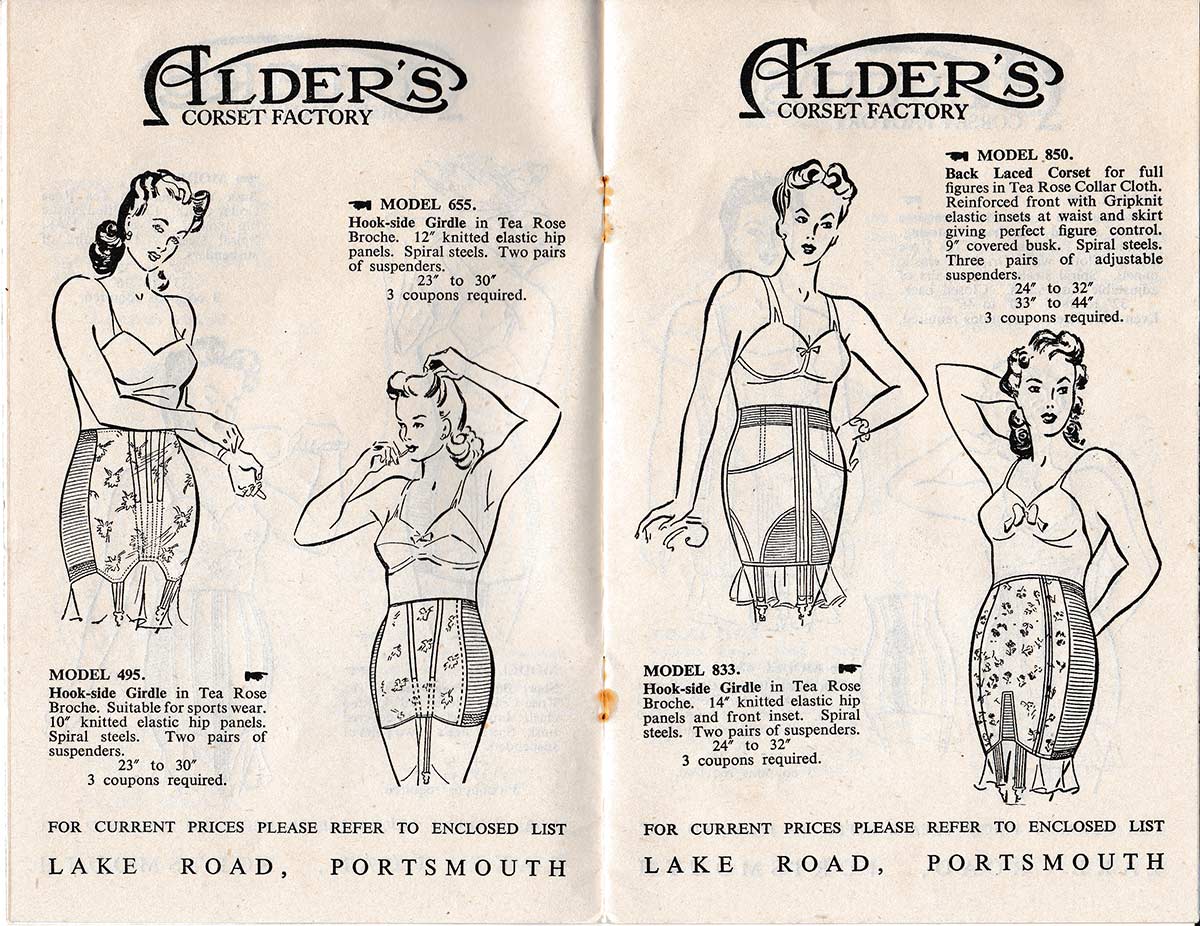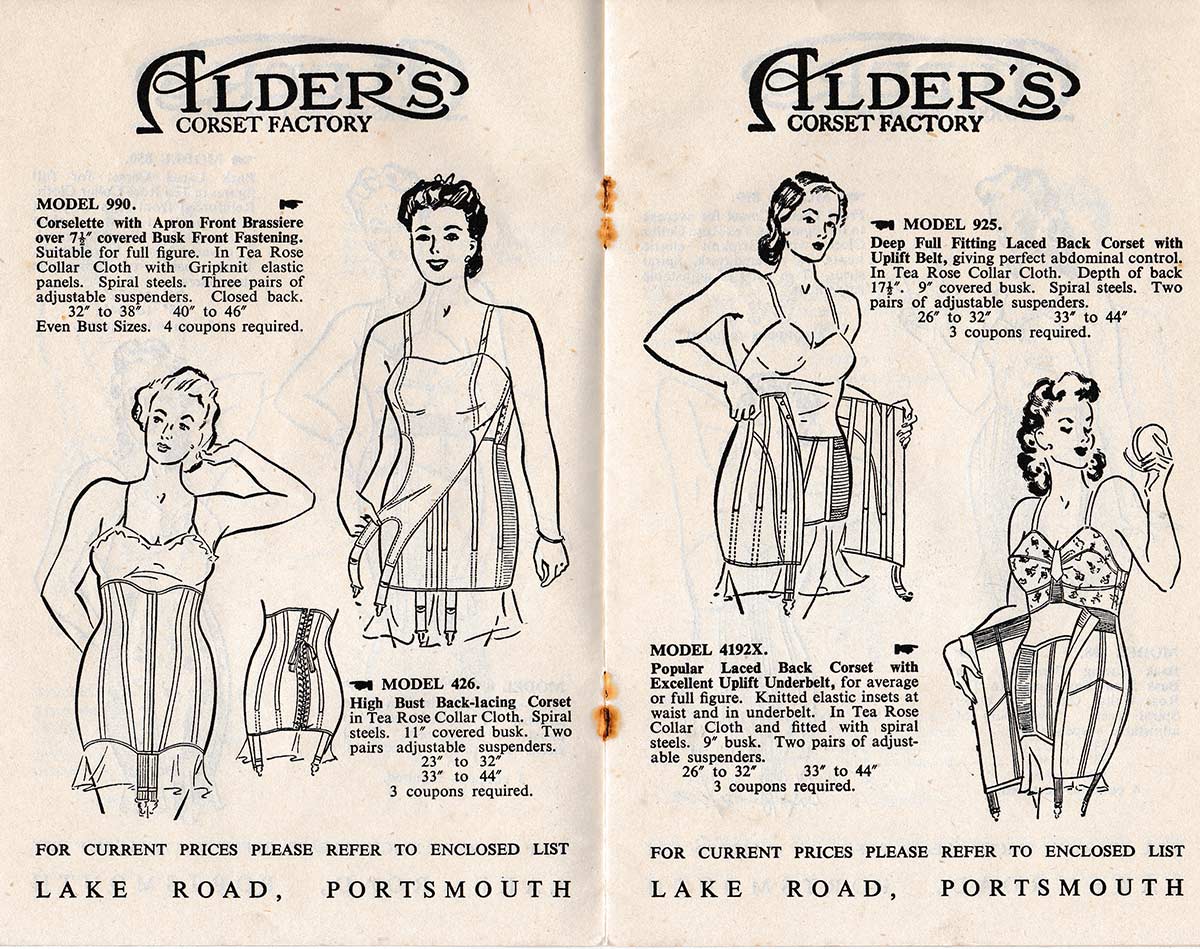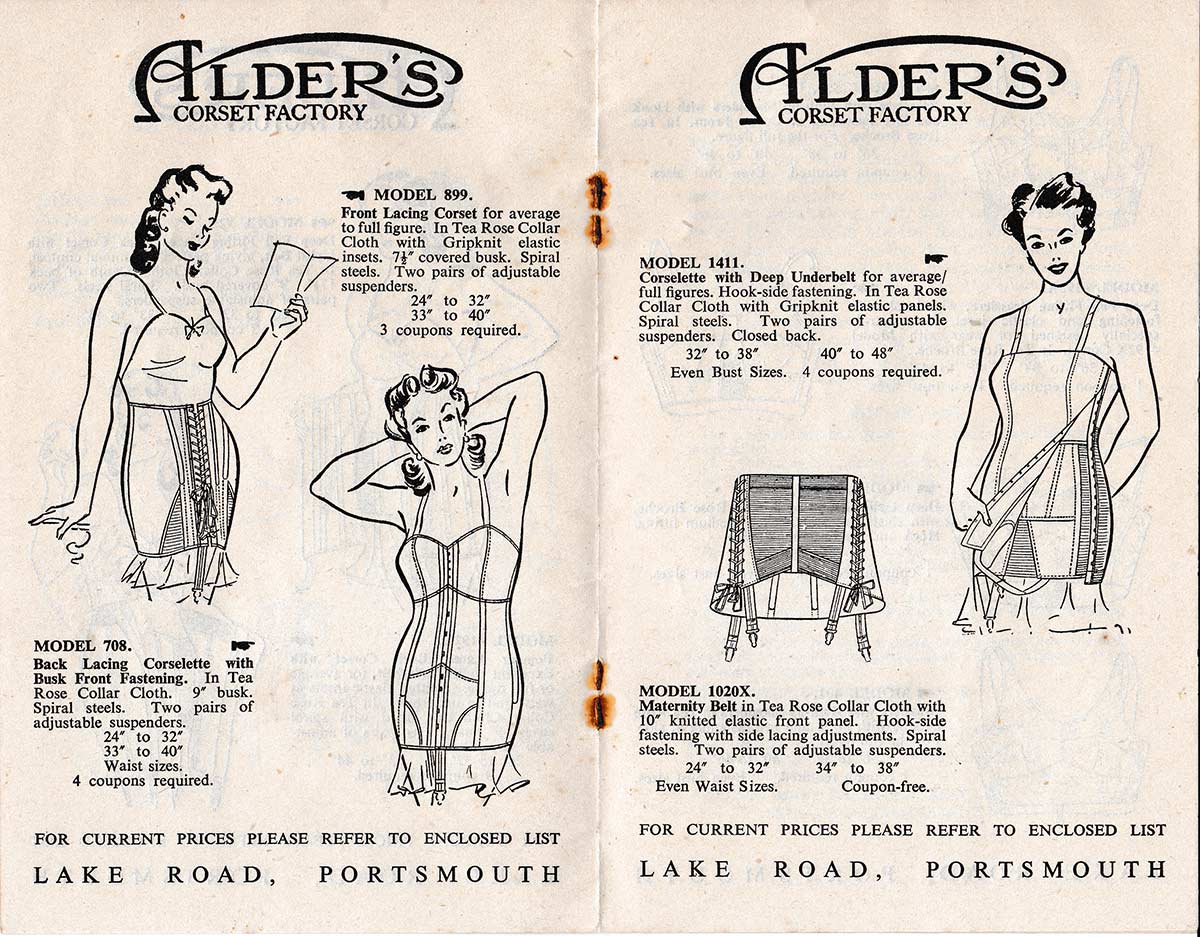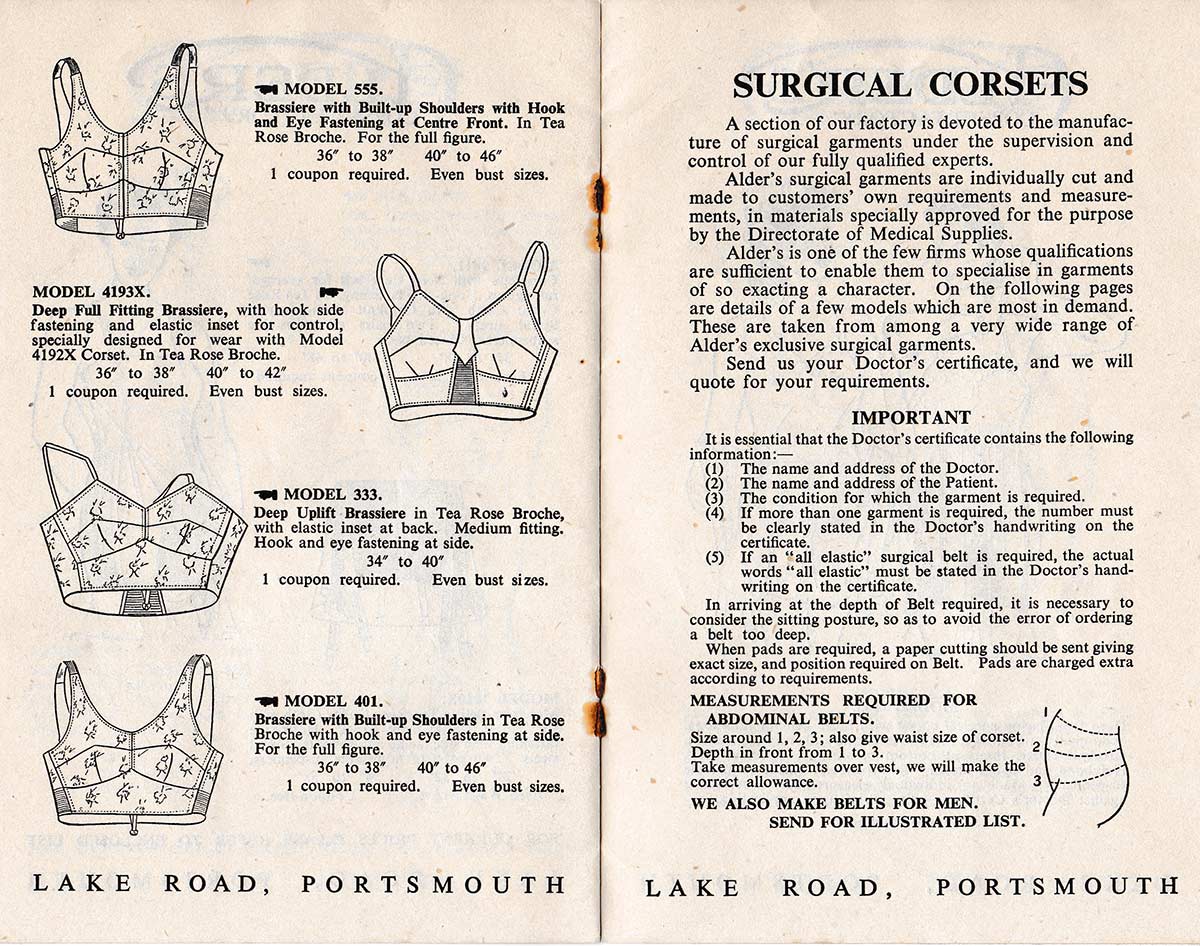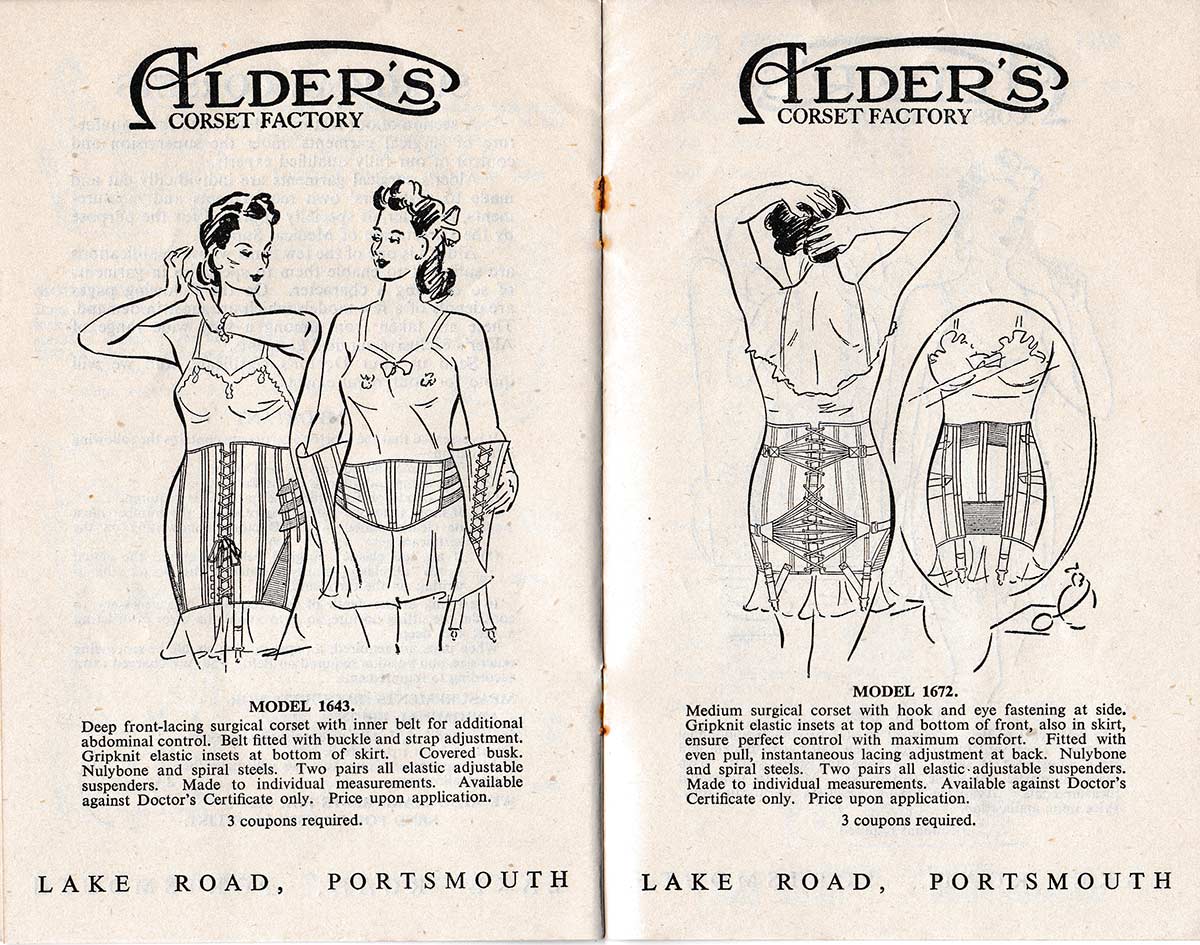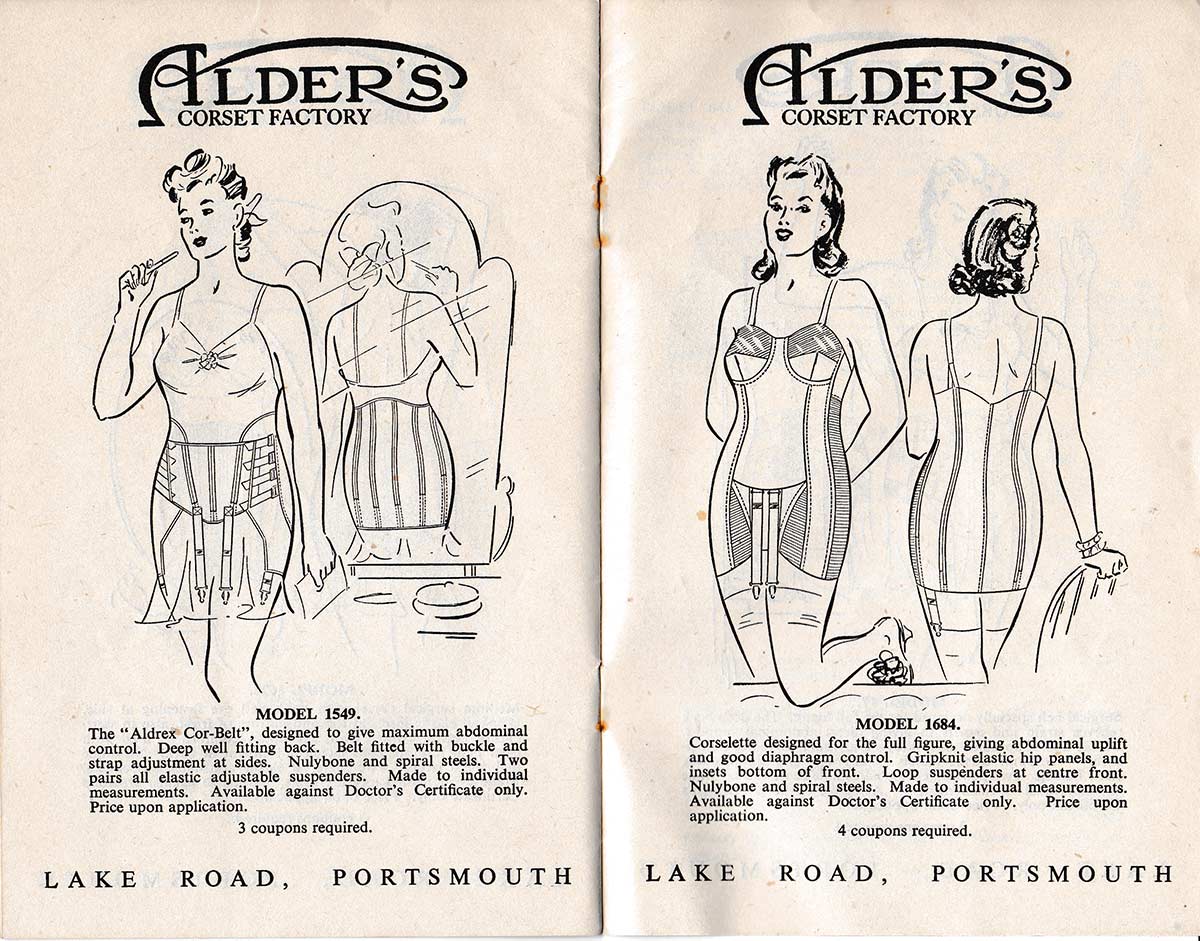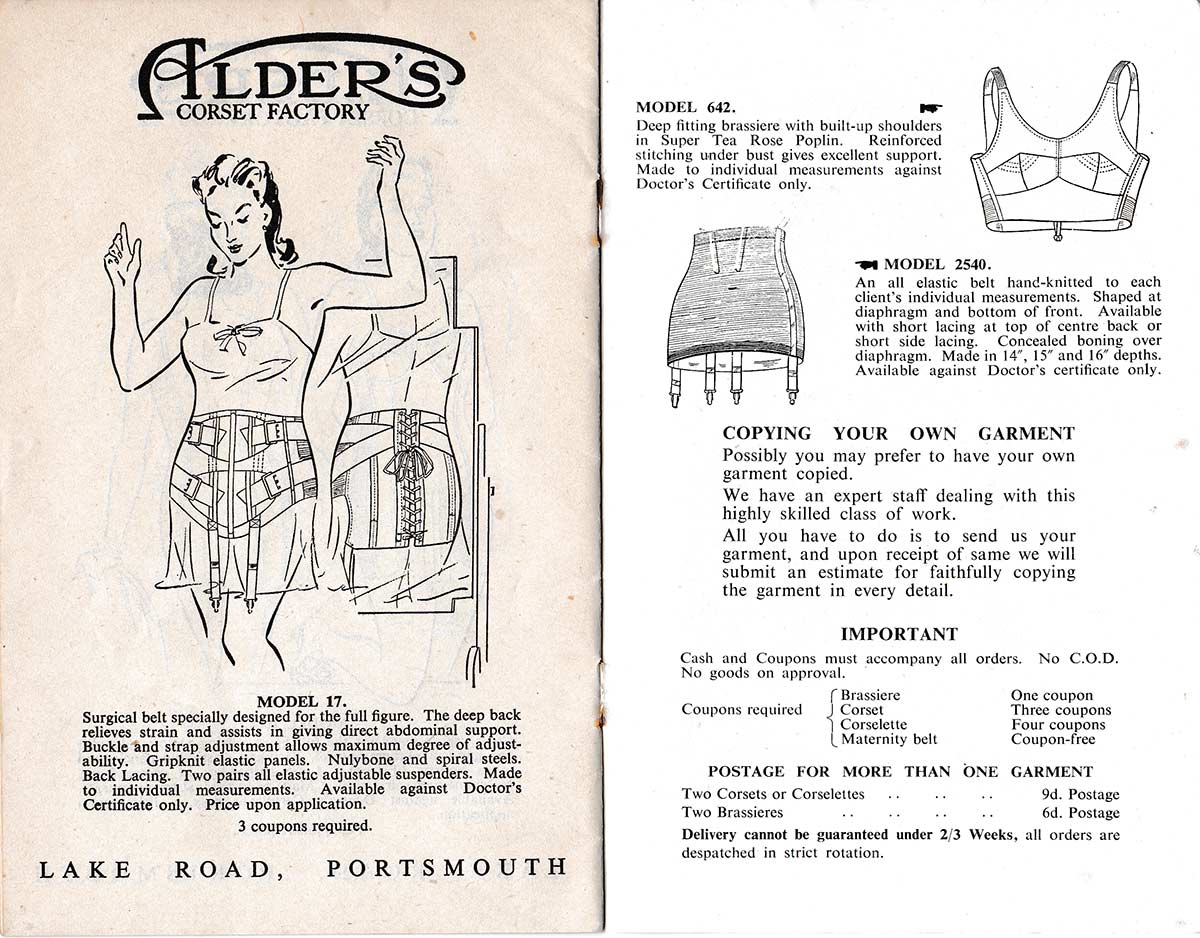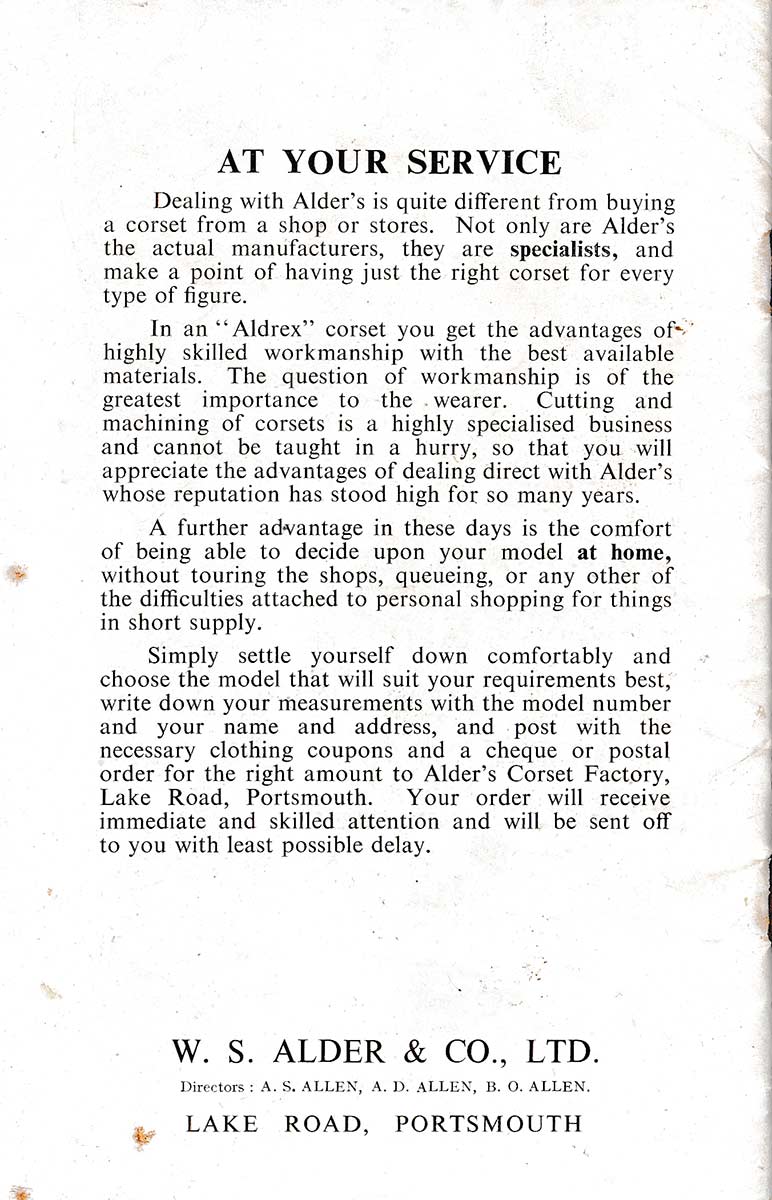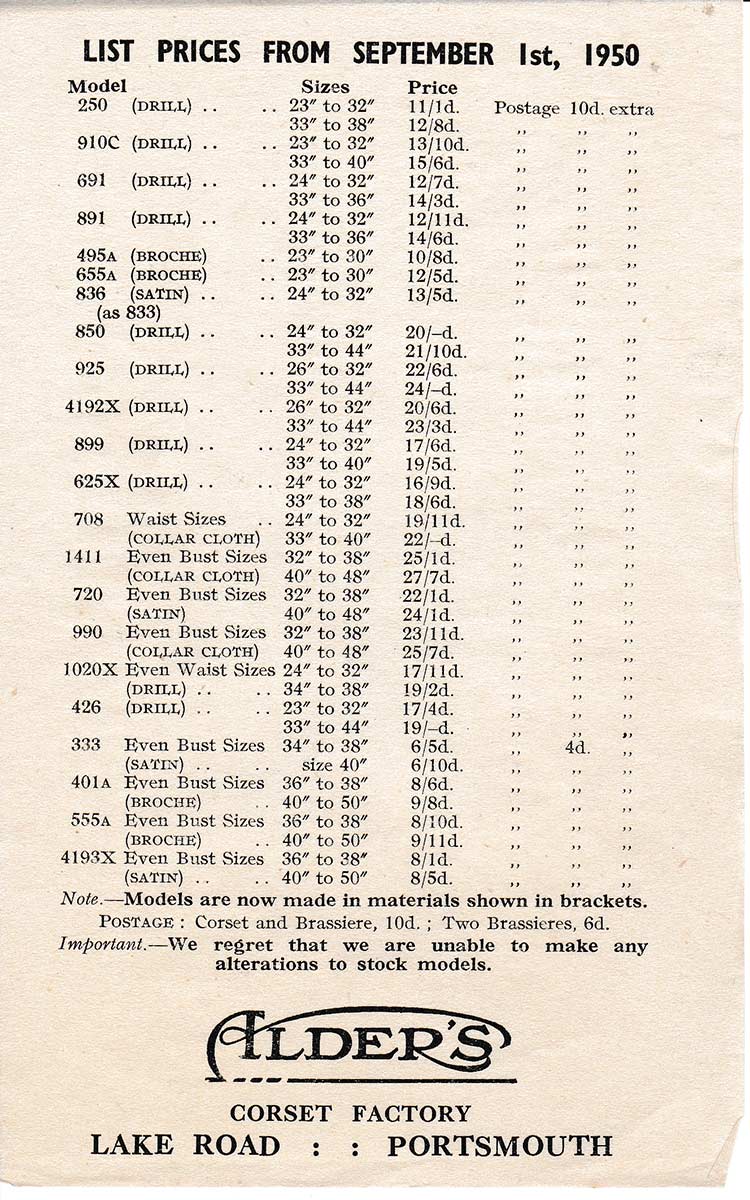Date: 1950
Origin: England
Brand: Aldrex by Alders
A catalogue from Portsmouth-based corset factory ‘Alders’, for their ‘Aldrex’ brand of corsetry. The pieces in this catalogue were likely designed shortly after World War Two, when clothing was still rationed. It is highly probably therefore that these pieces of lingerie were designed with fabric and material limitations in mind, so as to adhere to strict legal rationing requirements. The sticker at the front of the catalogue indicates that it was printed shortly before rationing was discontinued, so the listed coupon prices within the booklet offer a valuable insight into clothing value of the period.
It is interesting to note the brief references to fabric and colour. Every garment appears to be available only in Tea Rose, the muted pink tone that is often found in lingerie of this period. The main fabrics used appear to be cotton drill and collar cloth, both heavy-weight fabrics, well-suited to shapewear. Brassieres are also offered in poplin. The later addition of the pricelist (a separate insert) indicates that the fabric selection was expanded to include broche and satin. It is interesting to note the use of knitted elastic panelling in the girdles, which would have offered some flexibility to garments that were otherwise constructed similarly to heavy corsetry (with busks and spiral steel boning).
Garment sizes appear to refer solely to body measurements, with bras sold according to overbust measurement (it would not be until the following decade that differences between ribcage and overbust would begin to be taken into account) and girdles by waist measurement.
The section dedicated to surgical corsets and medical garments is a particularly valuable resource. Many of these garments were likely used by individuals needing spinal support and post-partum women. Note the references to the necessity of doctor’s certificates and the provision for male clients. Each of these garments was made to measure, and the company offered the service of garment copying. All of the garments in this catalogue were made to order, with a minimum delivery period of 2 weeks.
From the collection of The Underpinnings Museum
